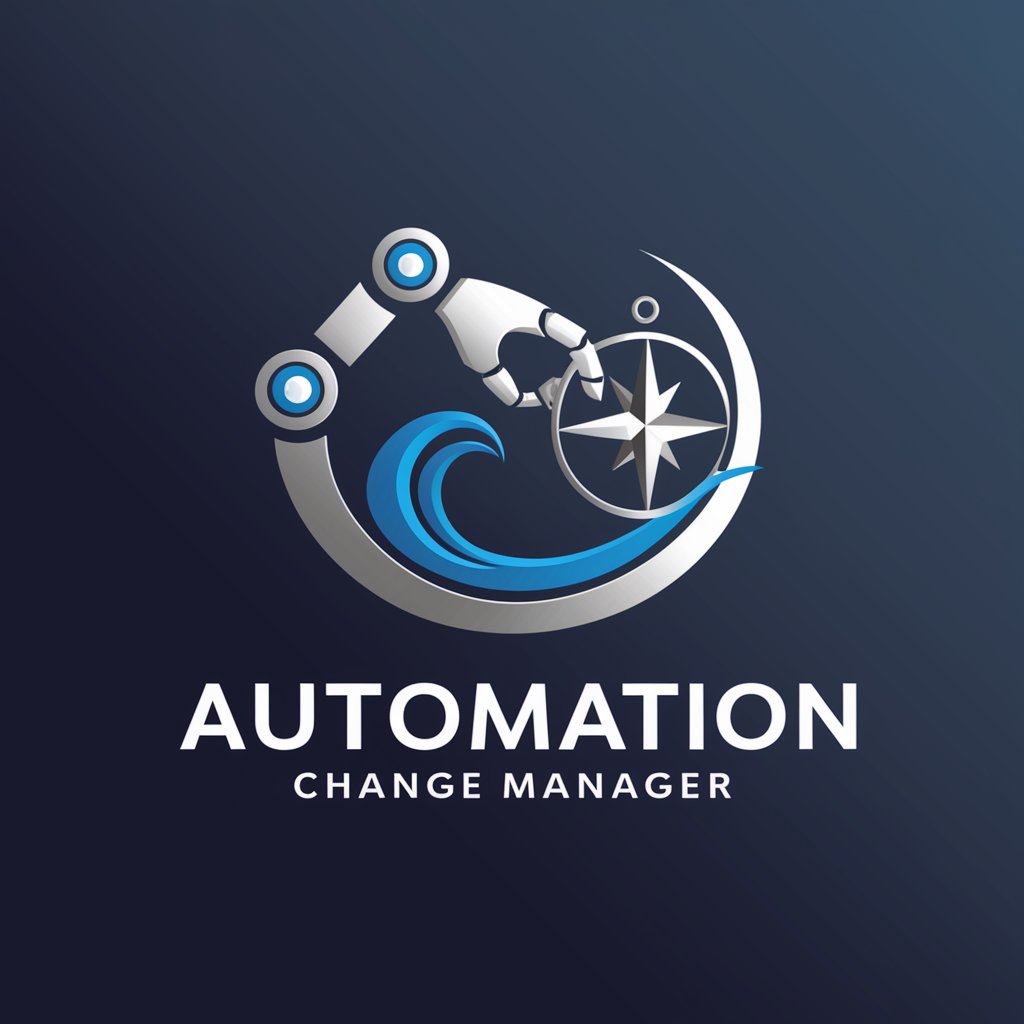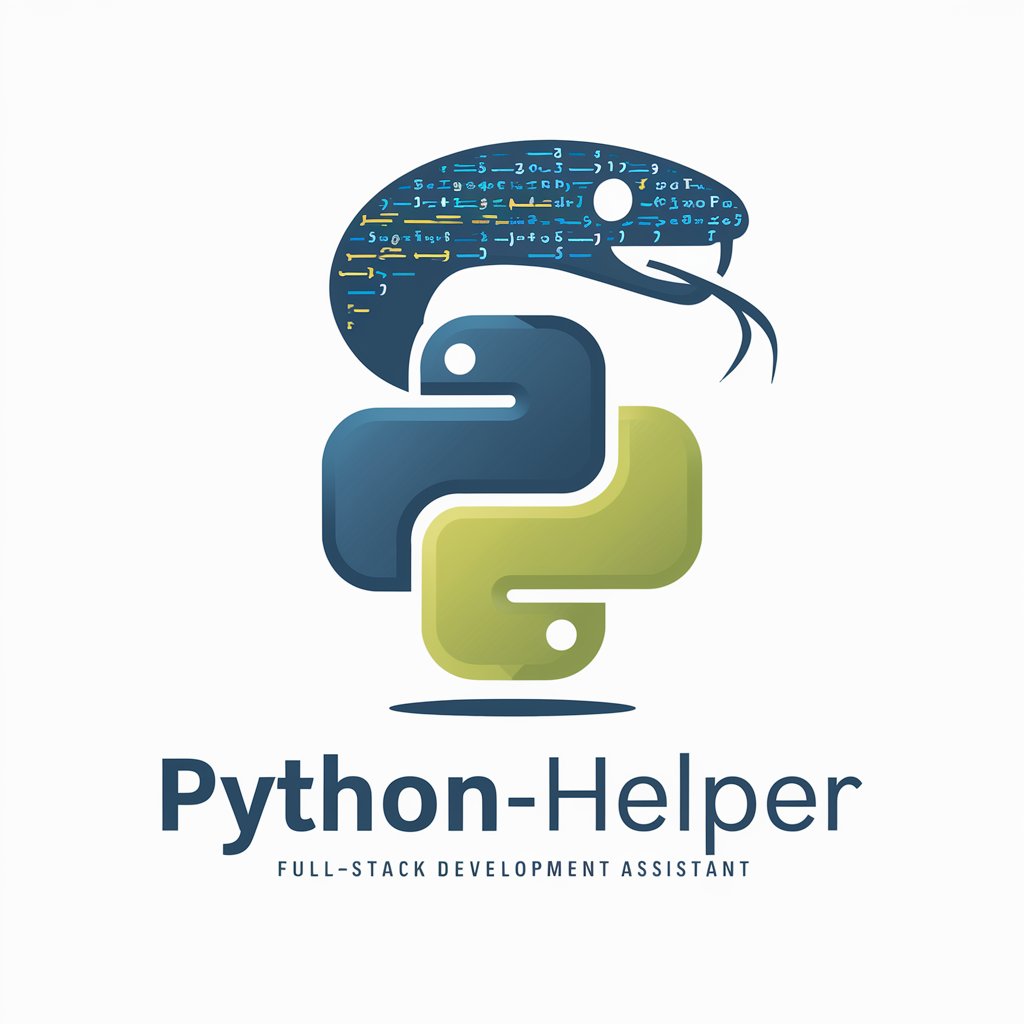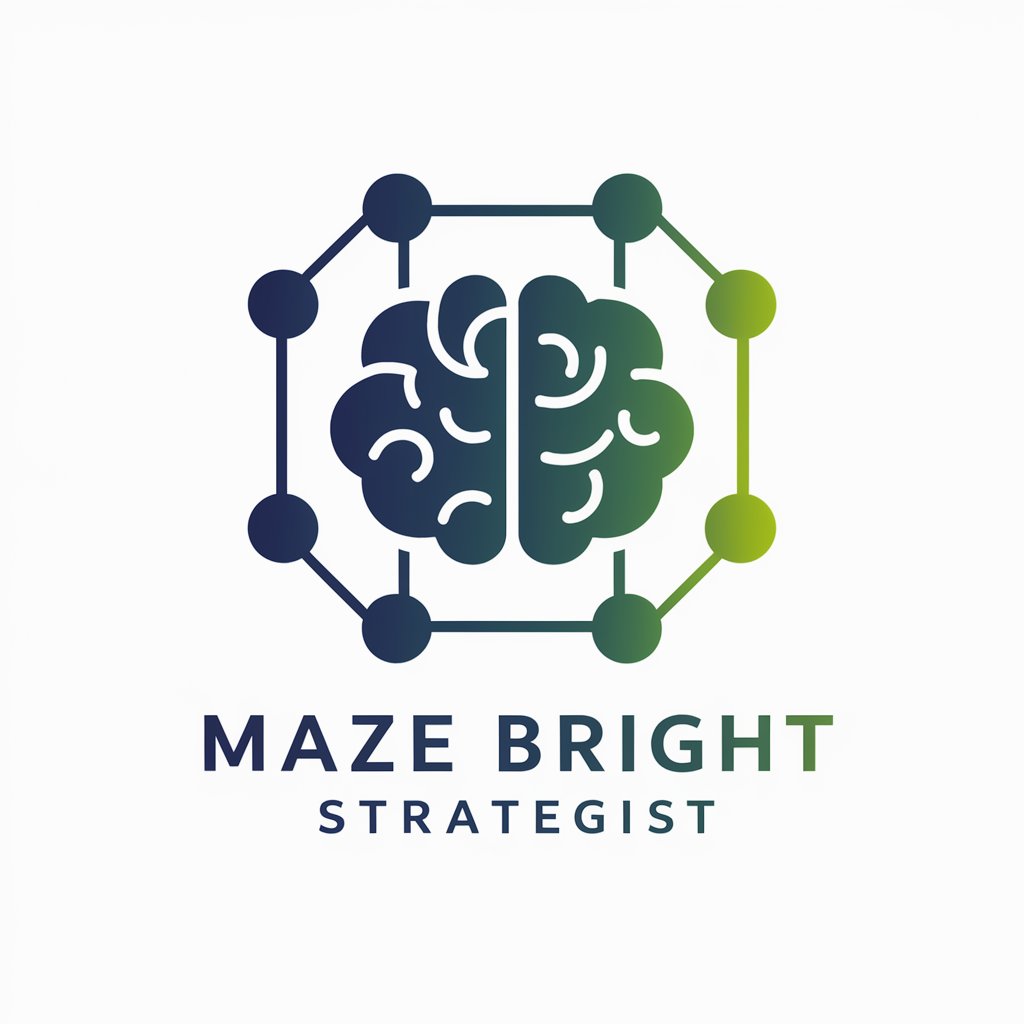Automation Change Manager - Change Management Aid

Welcome! Let's navigate your automation changes together.
Empowering automation success with AI-driven change management.
How can I effectively implement change management in my automation project?
What are the key principles of change management for RPA?
Can you provide insights on the importance of change management in intelligent automation?
What strategies can help ensure a smooth transition during automation changes?
Get Embed Code
Introduction to Automation Change Manager
Automation Change Manager is designed to facilitate the smooth integration of automation technologies, such as Robotic Process Automation (RPA) and intelligent automation, into organizational workflows. Its primary role is to oversee and manage the transition process, ensuring that automation solutions are effectively implemented with minimal disruption to existing operations. This involves preparing the workforce for change, aligning automation goals with business objectives, and mitigating any risks associated with the automation journey. For example, in the context of implementing an RPA solution to automate invoice processing, Automation Change Manager would guide the organization through the stages of assessing process suitability for automation, preparing the team for changes in their workflow, and ensuring the technology integrates seamlessly with the existing IT infrastructure. Powered by ChatGPT-4o。

Main Functions of Automation Change Manager
Change Readiness Assessment
Example
Evaluating an organization's preparedness for integrating an AI-based customer service chatbot.
Scenario
Before the deployment, the Automation Change Manager assesses the current state of the customer service department, including technology use, staff skills, and processes. This assessment helps identify gaps and areas that need support, ensuring a smooth transition to using chatbots for handling customer inquiries.
Stakeholder Engagement and Communication
Example
Facilitating workshops and training sessions for employees ahead of an automation project.
Scenario
The Automation Change Manager organizes workshops to inform and educate employees about the upcoming changes, addressing concerns, setting expectations, and highlighting the benefits of automation. This proactive communication strategy helps in reducing resistance and building a supportive environment for the change.
Risk Management and Mitigation
Example
Identifying and addressing potential challenges in automating supply chain logistics.
Scenario
Through a detailed analysis, the Automation Change Manager identifies risks such as data security vulnerabilities or potential disruptions to supply chain operations. Strategies are then developed to mitigate these risks, ensuring a secure and efficient transition to automated logistics systems.
Monitoring and Evaluation
Example
Tracking the performance of automated processes post-implementation.
Scenario
After implementing an automated solution for financial reporting, the Automation Change Manager monitors the system's performance, collecting data on efficiency gains and areas for improvement. This ongoing evaluation ensures that the automation delivers the intended benefits and supports continuous improvement.
Ideal Users of Automation Change Manager Services
Business Leaders and Decision Makers
Executives and managers who are responsible for driving innovation and efficiency within their organizations. They benefit from using Automation Change Manager services to ensure that automation initiatives align with strategic goals, are executed smoothly, and deliver measurable benefits.
IT and Automation Teams
Technical teams tasked with implementing and managing automation technologies. These groups benefit from guidance on best practices for change management, ensuring that new systems are integrated effectively with minimal disruption to existing IT infrastructure and workflows.
Human Resources Professionals
HR professionals play a crucial role in managing the human aspect of organizational change. They utilize Automation Change Manager services to develop and execute strategies for workforce transition, training, and support, ensuring employees are prepared and positive about the changes automation brings.

Guidelines for Using Automation Change Manager
1
Start by accessing a free trial at yeschat.ai, which requires no login or ChatGPT Plus subscription.
2
Identify the automation project or process within your organization that needs change management support.
3
Utilize the provided tools and resources to assess the impact of automation on your organization and stakeholders.
4
Develop a change management strategy tailored to your specific automation initiative, leveraging insights and best practices.
5
Implement the strategy, monitor progress, and adjust as necessary, using feedback loops to ensure continuous improvement.
Try other advanced and practical GPTs
Solicitor's Qualifying Exam Prep
Ace the SQE with AI-driven prep

Exotic Futuristic Shader Scientist
Crafting the Future of Visual Effects

Inspirational Morning Message
Empower Your Mornings with AI-Driven Positivity

Gridiron Guru
Empowering your fantasy football decisions with AI.

🎭 CreativeEntertainerGPT 🎭
Bringing Pop Art to Life with AI

woxow.com Keyword Research / Topical Map (SEO)
Revolutionize Your SEO with AI-Powered Insights

思维模型教练
Empowering Minds with AI-Driven Critical Analysis

Adam - Interview Coach
Master Your Interview with AI Coaching

Python Helper
AI-Powered Coding Companion

Maze Bright Strategist
AI-Powered Strategic Business Mastery

Power Scout
Unveil the combat potential with AI

レシピとビジュアルクリエイター
Bringing Recipes to Life with AI

Frequently Asked Questions about Automation Change Manager
What is Automation Change Manager?
Automation Change Manager is a tool designed to guide users through the process of managing change in automation projects, incorporating strategies to ensure successful implementation and adoption.
Who should use Automation Change Manager?
It's ideal for project managers, change managers, and organizational leaders involved in implementing automation or RPA within their organizations.
How does Automation Change Manager assist in change management?
The tool offers resources and methodologies for assessing change impact, developing strategies, and implementing plans with a focus on stakeholder engagement and adaptation.
Can Automation Change Manager be used for any type of automation project?
Yes, it is versatile enough to support a wide range of automation initiatives, from simple RPA deployments to complex intelligent automation solutions.
What are the benefits of using Automation Change Manager?
Benefits include reduced resistance to change, enhanced stakeholder engagement, smoother transition to new processes, and improved realization of automation benefits.
